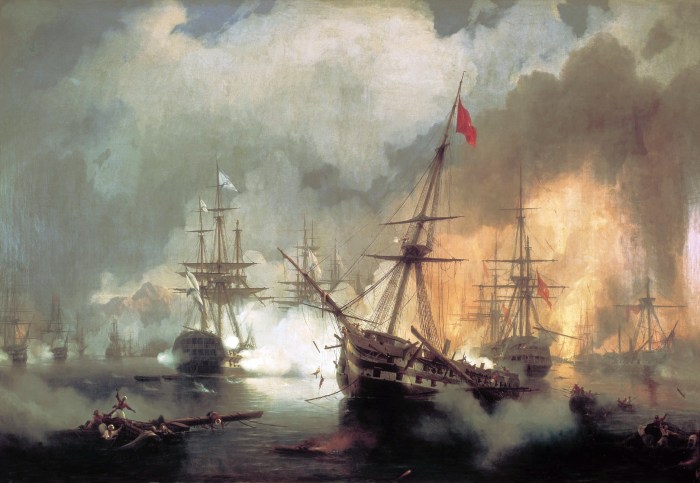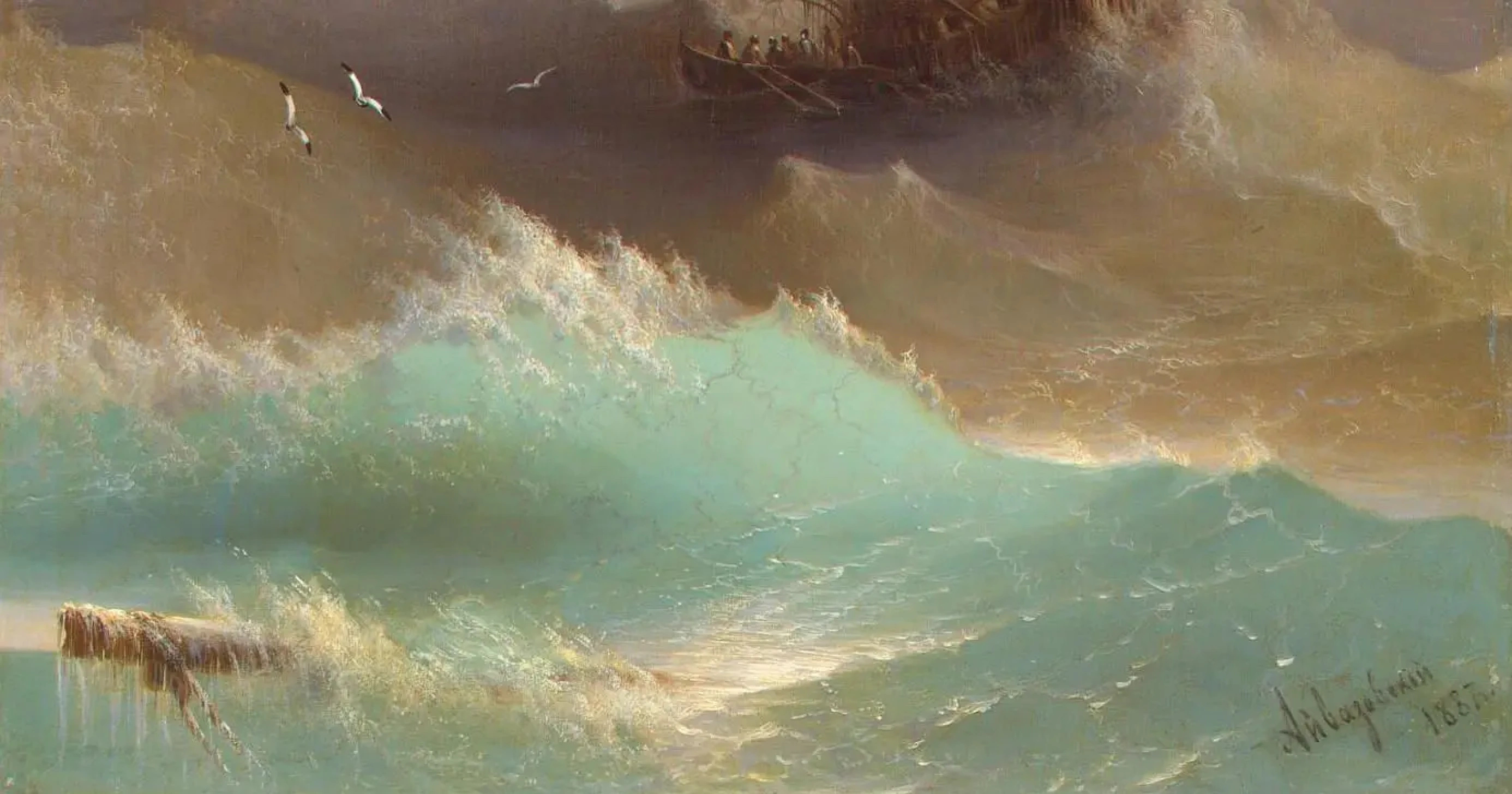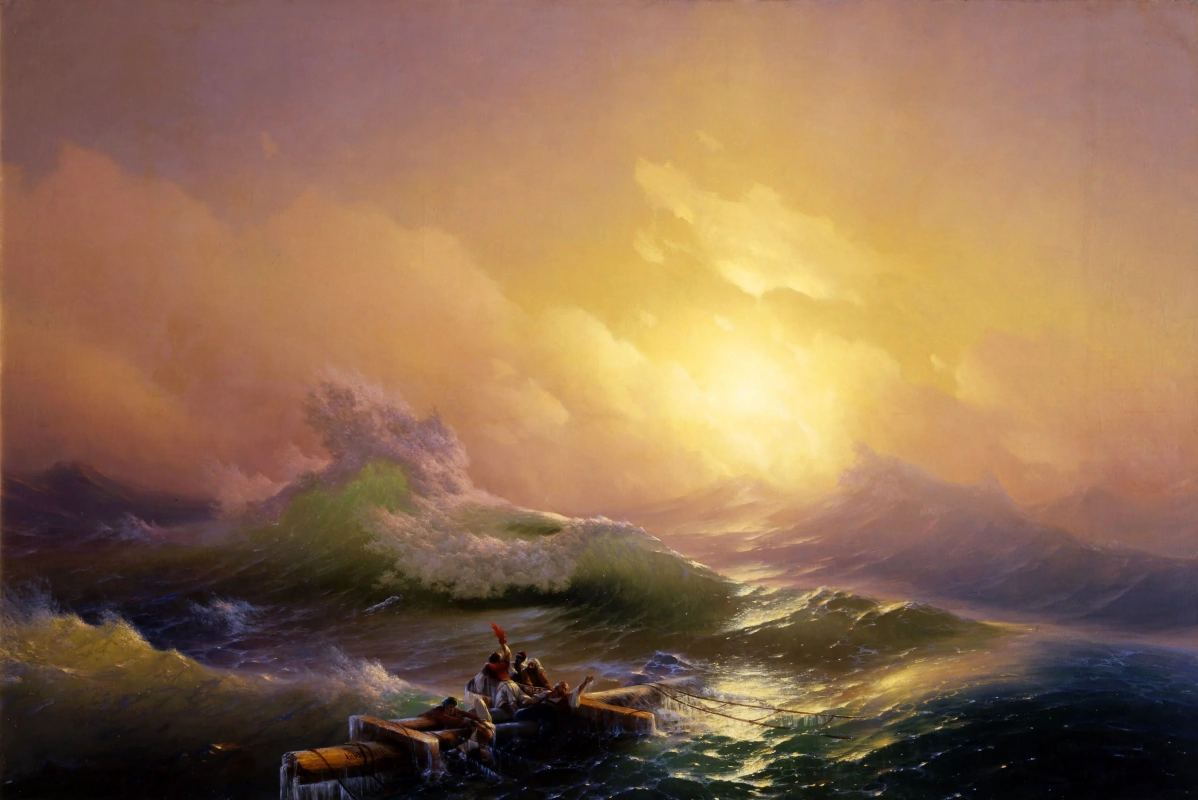 Ο Ιβάν Κονσταντίνοβιτς Αϊβαζόφσκι,(1817 - 2 Μαΐου 1900) ήταν Ρώσος ζωγράφος Αρμενικής καταγωγής . Γεννήθηκε και πέθανε στη Θεοδοσία της Κριμαίας τα χρόνια της Ρωσικής αυτοκρατορίας , θεωρείται από πολλούς ως ο μεγαλύτερος θαλασσοζωγράφος όλων των εποχών.
Ο Ιβάν Κονσταντίνοβιτς Αϊβαζόφσκι,(1817 - 2 Μαΐου 1900) ήταν Ρώσος ζωγράφος Αρμενικής καταγωγής . Γεννήθηκε και πέθανε στη Θεοδοσία της Κριμαίας τα χρόνια της Ρωσικής αυτοκρατορίας , θεωρείται από πολλούς ως ο μεγαλύτερος θαλασσοζωγράφος όλων των εποχών.
Γεννήθηκε τον Ιούλιο του 1817 μετά το τέλος των ναπολεόντιων πολέμων στη Ρωσία τα χρόνια της ηγεσίας του Αλέξανδρου Α' και σπούδασε στην ακαδημία καλών τεχνών της Αγίας Πετρούπολης όταν ξέσπασε η ελληνική επανάσταση ήταν μόλις 4 χρονών.
Άρχισε από νωρίς να γίνεται γνωστός για το μεγάλο ταλέντο του στη ζωγραφική, για αυτόν έγραψαν οι σημαντικότερες προσωπικότητες του ρωσικού πολιτισμού του 19ου αιώνα και όχι μόνο, όπως ο Άντον Τσέχωφ και ο Φιόντορ Ντοστογέφσκι.
Στους πίνακές του ζωντάνεψε τις περισσότερες θάλασσες και ωκεανούς του κόσμου αλλά και την Ευρωπαϊκή ιστορία της εποχής του όπως ναυμαχίες από τον Ρωσοτουρκικό πόλεμο και την Ελληνική επανάσταση.
Ο τσάρος της Ρωσίας Νικόλαος Α' είπε: «εγώ είμαι ο τσάρος της γης και ο Αιβαζόφσκι ο τσάρος της θάλασσας».
Ιβάν Αϊβαζόφσκι - Βικιπαίδεια
**********************************
 Ivan Aivazovsky - Θεματοφύλακες Λόγω Τεχνών
Ivan Aivazovsky - Θεματοφύλακες Λόγω Τεχνών
 Ivan Aivazovsky - Θεματοφύλακες Λόγω Τεχνών
Ivan Aivazovsky - Θεματοφύλακες Λόγω Τεχνών
Amidst the waves. 20 fascinating facts about Ivan Aivazovsky, the artist most loved by the Russians
Source: arthive.com
Let Arthive tell you what remarkable person he was.

2. Aivazovsky inspired the acknowledged British master of marine paintings William Turner to write a poem dedicated to his Russian colleague.
Aivazovsky`s painting The Bay of Naples at Moonlit Night made a lasting impression on Turner.
5. Aivazovsky painted "Creation of the World" in one day. It took him just nine hours! It measures 195×236 cm.
- Ivan Aivazovsky. Among the Waves. 1898
- Ivan Aivazovsky. Creation of the World. 1864
6. And this seascape entitled "Chaos: Creation of the World" was painted in 1841. At that time, Aivazovsky lived in Italy (Russian artists had a habit to travel to Italy in search of inspiration and beautiful views then). The rumors of the Russian artist who had completed an incredible picture with a scene of the birth of the world from chaos reached Pope Gregory XVI. The artist was invited to the Vatican. The Pope saw the canvas and was anxious to buy it. The artist denied the fee and passed the painting to the Pope as a gift. In return, Pope Gregory XVI honoured Ivan Aivazovsky with the Gold Medal.
He always considered Feodosia being his home despite he visited Berlin, Vienna, Trieste, Dresden, Rome, Istanbul and many other cities and countries and could afford to live anywhere. Aivazovsky promoted the welfare of his homeland. His influence on Feodosia’s life was huge. The painter established an art school, a library, a fountain, a concert hall and a picture gallery in Feodosia.
He had a soft spot for Champagne. Aivazovsky usually took away original labels and drew new ones instead. It is not hard to guess that more often there were swirling marine waves pictured there.







Δεν υπάρχουν σχόλια:
Δημοσίευση σχολίου